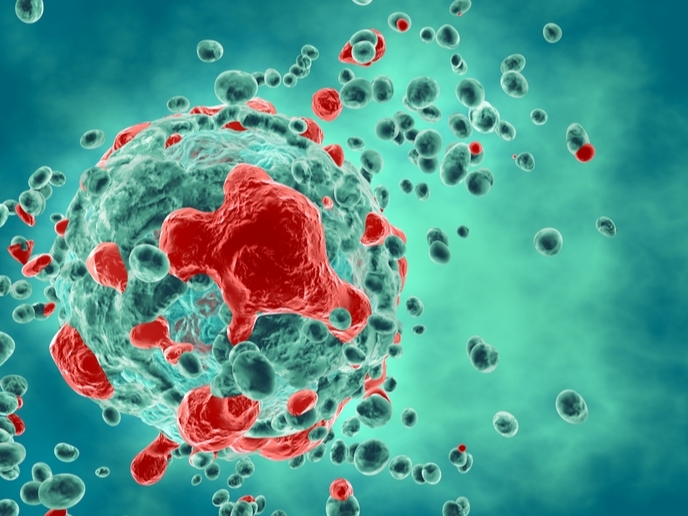Antibody-recruiting sugar-based molecules: The ‘sweet’ approach to targeted cancer therapy
At its best, the immune system is the ideal weapon against infectious diseases, as it eliminates viruses or bacteria that invade the body, killing infected cells while leaving healthy tissue intact. The specificity and power of the immune system as a way to attack cancer cells more strongly and effectively has not been overlooked by cancer scientists. Therapeutic monoclonal antibodies are amongst the most prominent passive immunotherapies that have revolutionised targeted cancer therapy. They target and bind to antigens – proteins that are mainly expressed on diseased cells – and employ different mechanisms to trigger death of cancer cells. Despite their success, monoclonal antibodies have significant limitations. “Fully synthetic supramolecular structures composed of diverse functional units that bind simultaneously to the cancer cell surface and to natural antibodies offer an excellent alternative to classical immunotherapy that utilises monoclonal antibodies. They can recognise different biomarkers that account for tumour heterogeneity which rapidly evolves during the disease,” explains Olivier Renaudet, Principal Investigator of the ERC project LEGO. Realising diverse combinations of both antibody and tumour-binding molecules offers a higher probability of recognising a larger population of a patient’s cancer cells.
A Lego-like molecular approach to manipulate the immune system
The project pioneered the synthesis of synthetic biomolecular structures called antibody-recruiting glycodendrimers (ARGs) that consist of optimal combinations of antibody- and tumour-binding modules. “Our ‘Lego-like’ approach allows the easy preparation of synthetic molecules to redirect the body’s own immune defence – endogenous antibodies present in the human bloodstream – to go after disease-causing entities such as cancer cells,” explains Renaudet. Researchers merged different approaches such as supramolecular chemistry, molecular engineering, biochemistry, immunochemistry and organic chemistry to design complex chemical compounds of unprecedented molecular composition. These trigger potent cytotoxic effects against cancer cells upon formation of a ternary complex between antibodies, an ARG and cells. The antibody-binding module attaches to endogenous antibodies, while the tumour-binding module binds tightly to specific proteins expressed on the tumour cell surface. By creating this ‘bridge’, ARGs enable endogenous antibodies to coat tumour cells, leading to their destruction. “We first identified potent antibody- and tumour-binding modules based on tests with different human sera (the fluid components of blood) and tumour cell lines, respectively. We then implemented a multi-click chemistry approach to combine these two functional moieties in the same supramolecular construct,” explains Renaudet. By using innovative glycoarray (a microarray of glycodendrimers) technology, the team screened and identified multivalent structures (ligands) with optimal affinity and selectivity for diverse carbohydrate-binding proteins. Project partners performed a successful proof of the principle of the idea. LEGO’s first lead compound demonstrated the ability to form a ternary complex and induce up to 70 % immune-mediated cytotoxicity in vitro against the human melanoma cell line M21, without immunisation and using human serum as a unique source of immune effectors.
Expected impact
The ability to design and synthesise molecules that emulate the functionality of our immune system represents a great advancement in the field. The novel methodologies introduced by LEGO could open new avenues for targeted immunotherapy, giving hope for safe and effective treatment options using synthetic chemistry. A similar approach could also be used to treat infections by pathogens (bacterial and viral) for which limited treatments are available.







